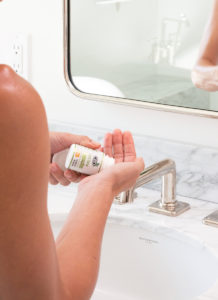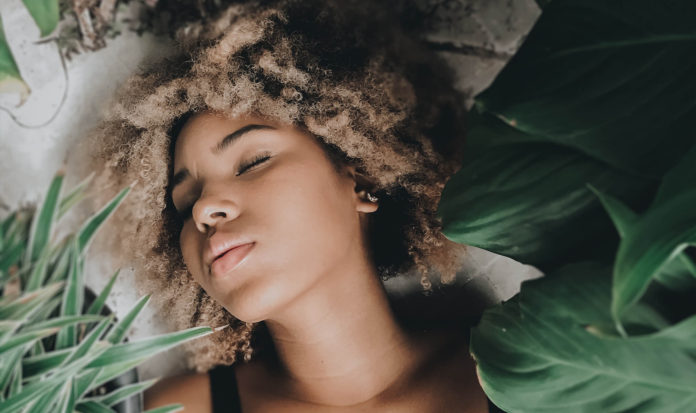It’s hard to know when you need a break from CBD unless you’ve been taking hemp wellness supplements for a while.
CBD research is still in its early stages, leaving you to figure out your serving amount.
This has a long-standing reputation for throwing people off, especially since your CBD serving amount is such a personalized experience.
What works for one person may not work for the next because everyone has unique body chemistry and personal factors.
Once you figure your serving amount and get a process going, it’s all good—until it stops working the same.
What happened?
You’ve most likely built up a tolerance to your CBD product, but no need to worry, it’s an easy fix remedied by taking a couple of days off.
Let’s talk more about knowing when to take a break from CBD.
How Cannabinoids Affect Your Brain & Body
For thousands of years, natural remedies have taken advantage of hemp and the therapeutic benefits it’s well-known for producing.
It’s no wonder scientists figured out there was more to the Cannabis Sativa plant back in the 1990s.
Along with THC—the psychoactive compound in cannabis—many other compounds affected the body in beneficial ways. Of these other known cannabinoids, CBD is the most prominent.
During a test to see how cannabinoids affect the brain, scientists noticed something they didn’t expect: cannabinoids were causing systems all over the body to activate.
It wasn’t long after the FDA approved that CBD for treating severe cases of epilepsy.
What CBD Does
When you’re wondering whether or not you need a break from CBD, it’s important to figure out what this compound does once it absorbs into your bloodstream.
CBD works by stimulating the production of hormones—more than your body would naturally make.
Your brain has these tiny cells called cytochromes that release enzymes. Enzymes clean up hormone production once the brain signals that the process is over.
CBD inhibits cytochromes from stopping the production of your body’s endocannabinoids.
By keeping the endocannabinoid system active, your body has more time to produce an array of therapeutic benefits.
The beauty of CBD is that it is safe, non-toxic, and appropriate for daily use. However, that doesn’t mean you should take as much as you can every time.
Always start with small amounts and work your way up in concentration until you find your “sweet spot” or desired effect.
How Tolerance Affects CBD
Once you get more acquainted with your CBD product(s), you’ll begin to notice it embodies a helpful blend of relaxation, comfort, and alertness.
It’s non-psychoactive since it contains less than 0.3% THC, but you’ll still feel a gradual increase of calming effects for about an hour or two before it wears off.
As it wears off, many decide it’s time to re-up and take more. In most cases, this results in less of an effect compared to the first time.
Why?
Because while the brain may be able to keep the door open for endocannabinoid production, it can’t do it indefinitely.
Pushing the endocannabinoid system won’t produce the same effects, especially if you’re taking a lot—instead this works to build a tolerance.
Tolerance occurs after the body gets used to repeated use of a compound or substance and needs more to get the same effect. CBD isn’t addictive or habit-forming, but you can still build a tolerance with consistent use.
If you find yourself taking CBD without feeling any of the benefits, take a couple of days off and let your body hit the reset button.
That’s all it takes.
Signs that You May Need a Break
Now that you know how CBD affects the brain let’s look at how to know when you need a CBD break.
At the end of the day, it’s all about what you feel. If you no longer feel the same level of effects and you’ve been taking a minimal amount, you can increase the serving amount.
You’ll always need to adjust your serving amount as your tolerance goes up and down in response to your consumption.
However, if nothing else seems to work, this is an indication that it’s time for a break.
Is CBD Right for Everyone?
It’s important to remember that CBD doesn’t produce miracles.
With this in mind, if you decide to integrate CBD into your daily routine, it’s a good idea to speak to your primary care physician. 
The beauty of CBD is that there are plenty of ways to take it. Some people take capsules each day; some take a gummy, and others inhale it with a vape pen.
Each of these methods has a different effect since they have varying bioavailability rates.
Vaping, for example, has the fastest onset time and wears off the quickest.
If you’re new to CBD and want something with a lower concentration, vaping is a great way to get fast, discreet relief when you need it.
For those who want a more consistent serving, pre-measured capsules or gummies are a better option.
Quality Matters
Always buy organic CBD from a reputable company.
If you buy the cheapest thing you can find at the corner store, it probably won’t have much effect. So, you’ll end up taking more, trying to feel something, ultimately leading to tolerance build-up.
When you purchase high-quality CBD, you have the best chance of getting the relief you need without wasting money and having to take an excess of product.
A reputable vendor should be able to provide lab reports for the products they offer.
Third-party lab results tell you what’s in the product, including cannabinoids, toxic
residue—any and everything worth knowing.
Besides, once you find the right product, sticking to a routine is easy.
Final Thoughts
You’ll always need to adjust your CBD serving amount since building tolerance is inevitable.
However, understanding when it increases your serving amount and when to take a break is just as important.
Now you know how to approach this if and when it ever becomes an issue.
Ready to check out our market-leading selection of CBD gummies?
Click here to have some shipped to you today.

